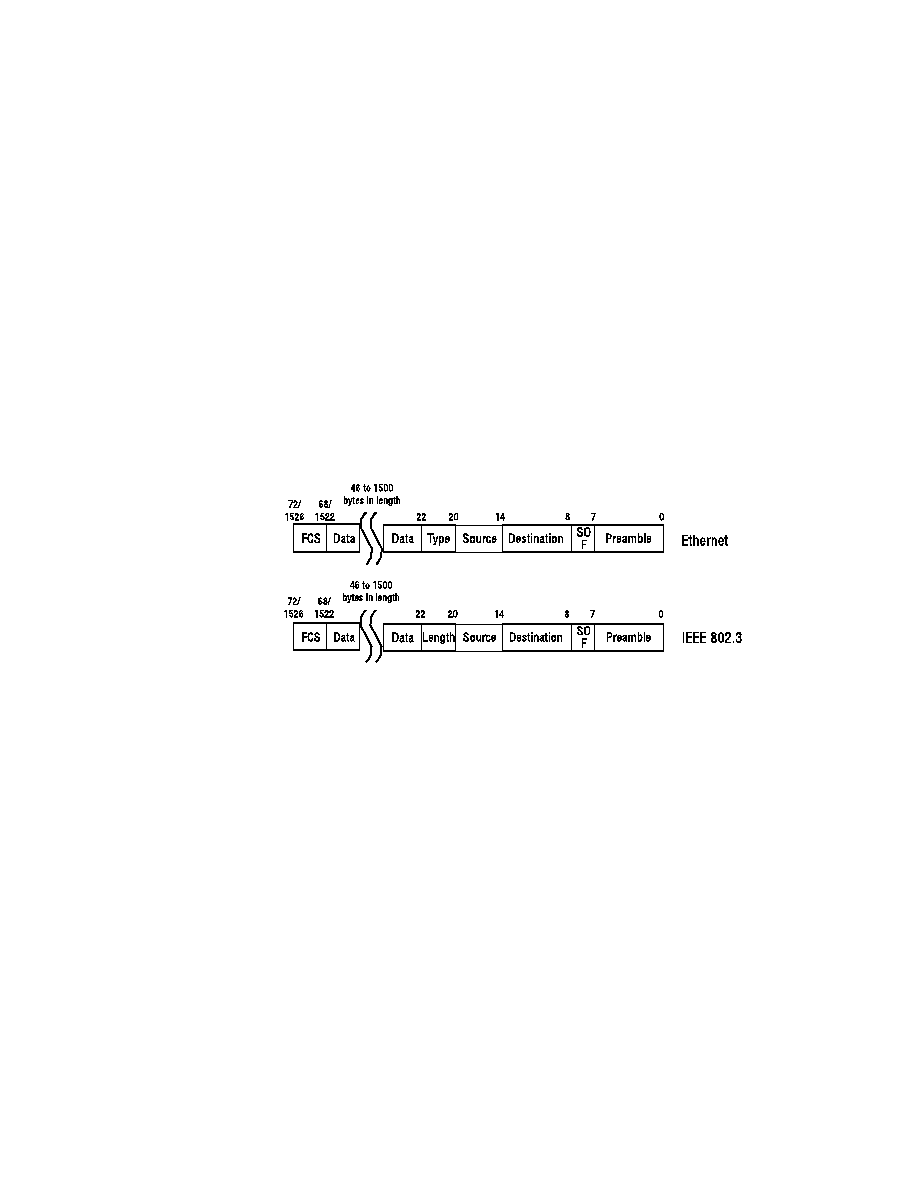
86
Chapter 2
Protocol Attributes
This is an excerpt from Cisco; for the full document, please see http://
www.cisco.com/univercd/cc/td/doc/ciscintwk/ito_doc/
ethernet.htm
.
Frame Structures
Frame formats are similar between Ethernet and IEEE 802.3. Figure 2.24
depicts the similarities and differences between the two frames. The frame
structures are read right to left. Starting at the right, you see that both frames
begin with a preamble. The Preamble is a seven-byte field. Notice that you
have moved from bits to bytes to specify field lengths. This value consists of
alternating 1s and 0s.
F I G U R E 2 . 2 4
Ethernet vs. IEEE 802.3 frames
The next field is the SOF, or start-of-frame delimiter. It is used to synchro-
nize the frame reception portions of all of the machines on the segment. This
field is only one byte long.
The two fields following the SOF are six bytes each; they are the
Destination
and Source MAC addresses of the receiving and sending sta-
tions. Each MAC address is unique.
Up to this point, the frames were exactly the same. Now, the differences
start. The following field is a two-byte field in both frame structures. Ether-
net defines the field as a Type field, whereas IEEE 802.3 defines it as a
Length
field. Ethernet uses the field to specify which upper-layer protocol
will receive the packet. IEEE 802.3 uses the field to define how many bytes
the payload (802.2 header and data) field is.
Copyright ©2000 SYBEX , Inc., Alameda, CA
www.sybex.com
